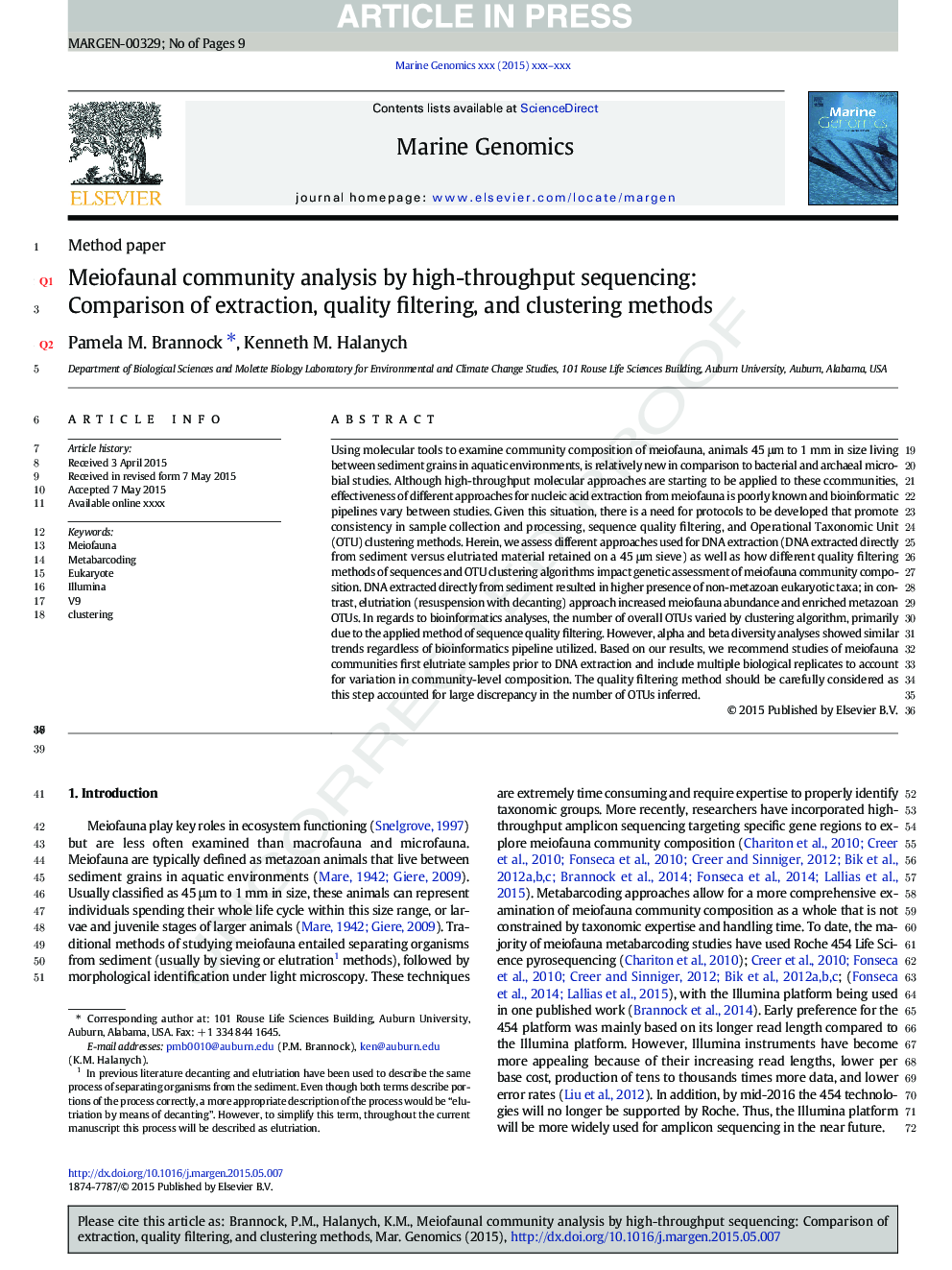| Article ID | Journal | Published Year | Pages | File Type |
|---|---|---|---|---|
| 8388404 | Marine Genomics | 2015 | 9 Pages |
Abstract
Using molecular tools to examine community composition of meiofauna, animals 45 μm to 1 mm in size living between sediment grains in aquatic environments, is relatively new in comparison to bacterial and archaeal microbial studies. Although high-throughput molecular approaches are starting to be applied to these ccommunities, effectiveness of different approaches for nucleic acid extraction from meiofauna is poorly known and bioinformatic pipelines vary between studies. Given this situation, there is a need for protocols to be developed that promote consistency in sample collection and processing, sequence quality filtering, and Operational Taxonomic Unit (OTU) clustering methods. Herein, we assess different approaches used for DNA extraction (DNA extracted directly from sediment versus elutriated material retained on a 45 μm sieve) as well as how different quality filtering methods of sequences and OTU clustering algorithms impact genetic assessment of meiofauna community composition. DNA extracted directly from sediment resulted in higher presence of non-metazoan eukaryotic taxa; in contrast, an elutriation (resuspension with decanting) approach increased meiofauna abundance and enriched metazoan OTUs. In regards to bioinformatics analyses, the number of overall OTUs varied by clustering algorithm, primarily due to the applied method of sequence quality filtering. However, alpha and beta diversity analyses showed similar trends regardless of bioinformatics pipeline utilized. Based on our results, we recommend studies of meiofauna communities first elutriate samples prior to DNA extraction and include multiple biological replicates to account for variation in community-level composition. The quality filtering method should be carefully considered as this step accounted for large discrepancy in the number of OTUs inferred.
Related Topics
Physical Sciences and Engineering
Earth and Planetary Sciences
Earth and Planetary Sciences (General)
Authors
Pamela M. Brannock, Kenneth M. Halanych,
